How To Care For An Aloe Vera Plant: A Plant With Purpose
An Aloe vera plant is one with purpose. Here are things to know about growing this easy succulent in pots as a houseplant and outdoors in different climates.
I would hazard a guess to say that an Aloe Vera plant is the most widely sold succulent the world over. Yes, it’s true, this plant has been used for 1000’s of years and is still highly favored today. It’s a beneficial plant with purpose and is really easy to grow in your home and/or outdoors in the garden so stay tuned for care and growing tips.
It also goes by many other names as well such as Aloe barbadensis, First Aid Plant, True Aloe, African Aloe, Burn Plant, and Miracle Plant. It’s so popular that it often gets called a single name “Aloe” (just like Beyonce, Madonna, or Prince!) even though there are over 400 different types of aloes.
For your reference: Here’s an Aloe Vera 101, a round-up of all the care guides I’ve done. You’ll find lots of helpful info on houseplant care, propagation, and planting.
How to Grow an Aloe Vera Plant
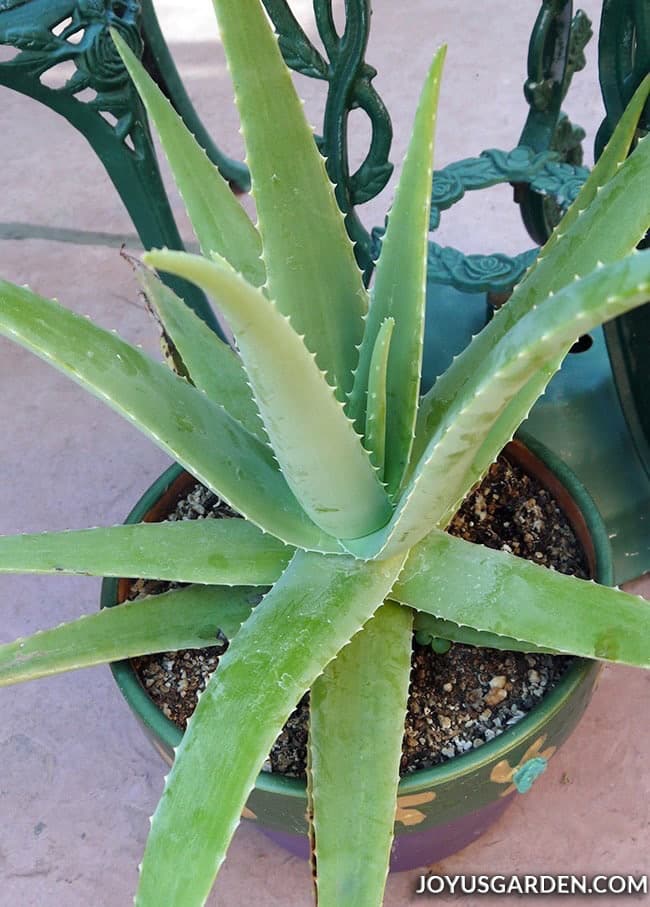
My Aloe veras grew in pots year-round outdoors when I lived in Santa Barbara and I hardly did a thing to them in terms of care. Fleshy succulents love that temperate coastal California climate.
They also make fine houseplants (so fine that Aloe is included in my houseplant care book) and are particularly handy to have to grow in the kitchen.
If you burn yourself that soothing fresh gel contained in the leaves is right there waiting for you. Head’s up because there are 2 important things you need to know to grow them successfully in your home which are listed under the 1st 2 care tips and summarized at the end.
Note: This is an updated post. The original was written almost 6 years ago when I lived in California and I’ve since moved to Arizona. I spent 10 years in Santa Barbara and have now lived in Tucson for 4 years.
I have a large pot of Aloe vera in my side garden which I brought as a small plant from Santa Barbara. It grows in bright shade and the leaves turn brownish/orange and get less plump in the hot months.
So, I’ll be sharing things I’ve learned about growing Aloe vera on the coast of Southern California, the Arizona desert, and as a houseplant. Please note that this post is written about Aloe vera growing in pots, and not in the ground.
Guides for growing Aloe vera as a houseplant:
Here I am on my back patio in Santa Barbara talking all things Aloe vera plant care:
Light
In the garden, you want your Aloe vera to get 2 or 3 hours of sun a day. As a rule, it can take more sun growing in coastal areas than hot inland locations.
It’s best protected from the hot afternoon sun and mine was actually stressed from being in too much sun (plus it desperately needed repotting). I moved it to a spot on the back patio that got lots of bright light but only a couple hours of direct sun. It did much better and was happier there along with a bigger pot and fresh soil mix.
Here in the Sonoran Desert, an Aloe vera plant does best out of the strong sun. I’ve seen them growing in full sun around town and they look a lot less robust than mine growing in the bright shade. Plus, the leaves are prone to brown tips due to the dry air and heat.
Indoors, Aloe vera needs as much light as possible, like a south or west exposure. This is not a low light plant and if it’s not getting the light it needs, the leaves will droop downwards.
Just be sure to keep it out of a hot window (like a west exposure) because the leaves will burn. It can be near that window but not in it. And, rotate your plant every 6 months or so if it’s not getting light from all sides so it grows straight.
More on succulents & sunlight: How Much Sun Do Succulents Need?
Watering
Aloe vera plants store water in their plump leaves and thick, fibrous roots. They’re easily prone to root rot if the soil mix stays too wet. In other words, they mush out!
No matter where your Aloe vera is growing, you want it to almost completely dry out before watering again. I water mine thoroughly and make sure all that water drains out. You don’t want it to be sitting in any water in a saucer or tray, especially when it’s growing indoors.
In the summer I water mine every 7-14 days, depending on the weather. Here in Tucson it’s weekly whereas in Santa Barbara it was every 2 weeks or so.
In the winter months, it’ll need even less water, maybe once every month or 2.
Indoors, once a month will probably do it in the summer and every month or 2 in the winter. I can’t give you a specific schedule. How often you water depends on the size of the plant and pot, the soil mix, and conditions your Aloe vera plant is growing in.
More useful houseplant guides:
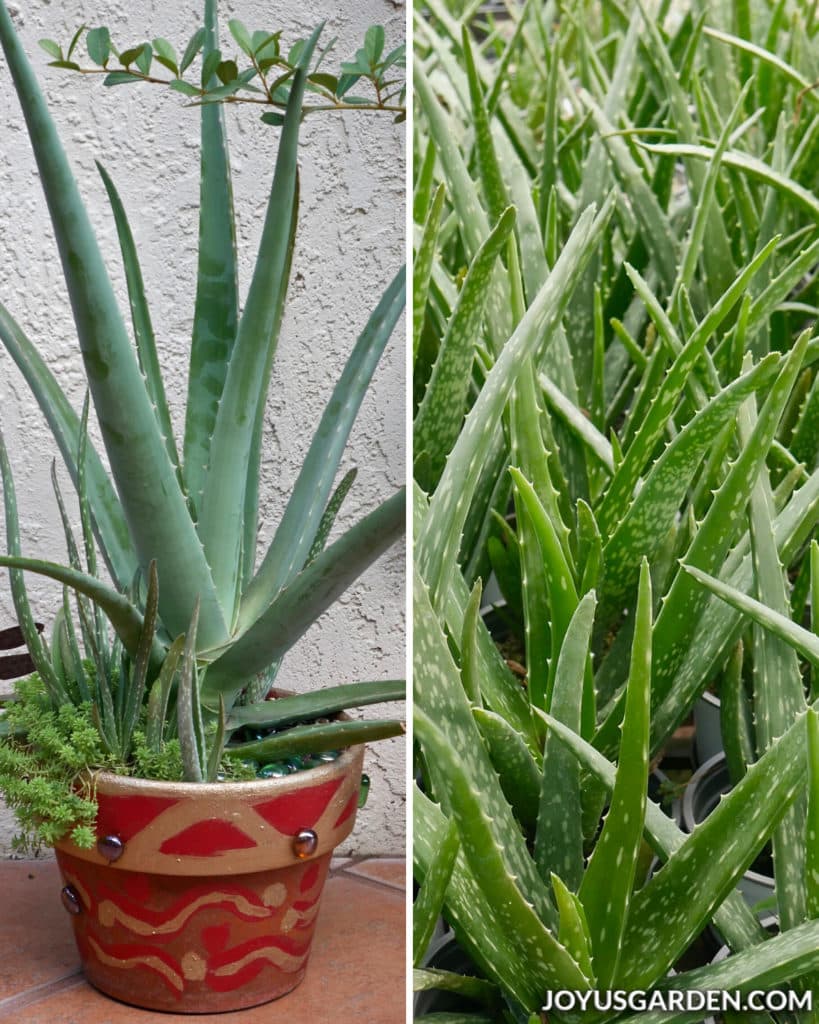
Soil
Following hot on the heels of and related to watering is soil mix. It’s very important to make sure that the mix yours is planted in drains well and is aerated to avoid root rot. Yes, the roots of plants need oxygen and when they stay too wet, they can’t respire.
I always use succulent & cactus mix and recommend that you use it any time that you’re planting or repotting Aloe vera in containers.
Here are some options to buy online:
- Bonsai Jack (this 1 is very gritty; great for those prone with an overwatering tendency)
- Hoffman’s (this is more cost-effective if you have larger containers but you might have to add pumice or perlite)
- Superfly Bonsai (another fast draining mix like Bonsai Jack great for indoor succulents)
If you think the mix you’re using needs the drainage and aeration factors elevated, then some add pumice or perlite.
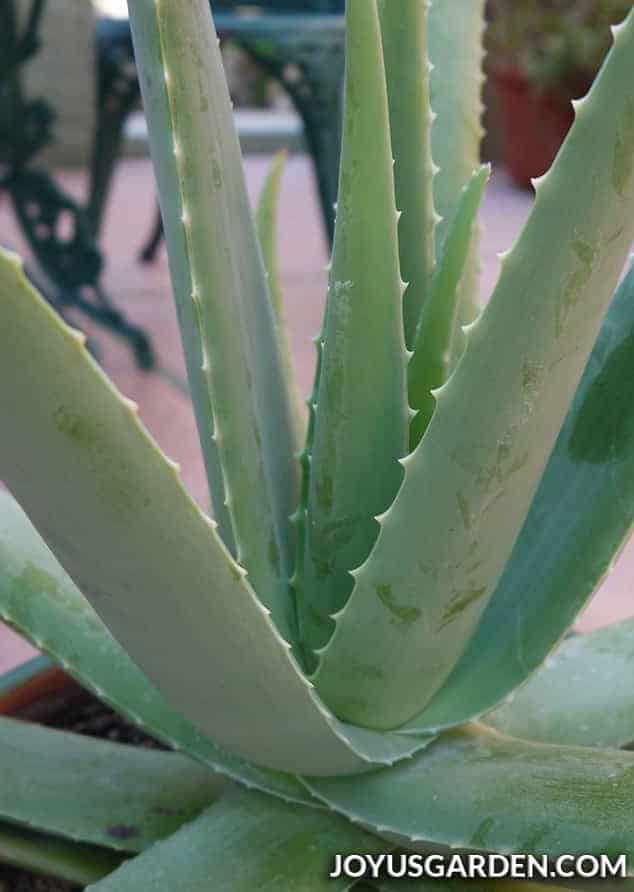
Temperature
Aloe vera is hardy to around 28 degrees F. My pots of Aloe vera lived outdoors year-round in Santa Barbara and do the same here in Tucson. If you live in a cold climate, be sure to bring yours in before the 1st freeze.
As houseplants, average home temperatures are fine for an Aloe vera plant.
Lack of humidity in our homes can be a problem for other houseplants, but not this one. It takes the dry air in our homes just fine.
Feeding / Fertilizing
This plant isn’t fussy or needy in regards to fertilizing. Like the majority of succulents, fertilizing isn’t really necessary. I sprinkle a 1/4″ layer of worm castings topped with a 1/2 – 1″ layer of compost on all my container plants, both indoors and out including Aloe vera.
Indoors, you could also use a balanced houseplant fertilizer at half strength, kelp or fish emulsion once in the spring. Whatever you do, don’t over-fertilize (too much or too often) and don’t feed in the colder, darker months. Shhhh, the plant is resting!
Propagation
Propagating is easiest done by removing and dividing the offsets or pups (babies) which grow off the base of the mother plant. It’s best to wait until the pups are a good size before removing them because that way the roots are much better formed.
Most succulents can be propagated by stem and/or leaf cuttings but not an Aloe vera. The stems and leaves are way too full of gel and I’ve never had success propagating one this way.
More on Aloe Vera pups:
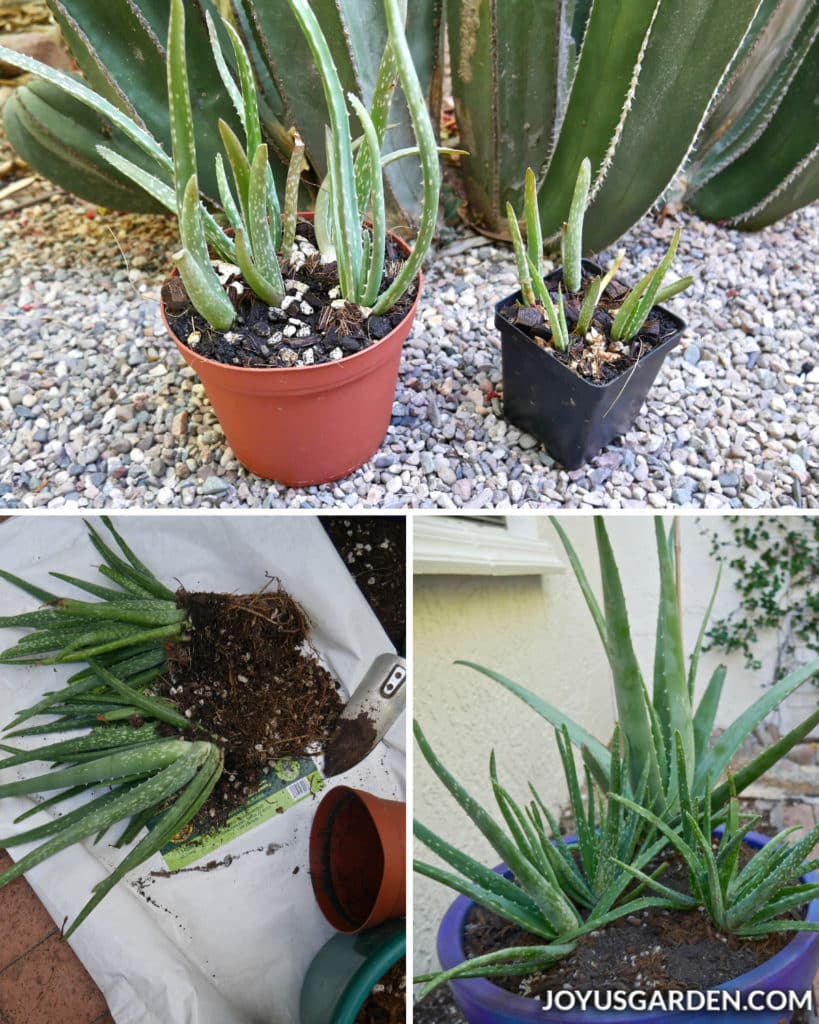
Pruning
None is really needed except to prune off the spent flower stalks and of course to remove those fleshy, fabulous leaves. You can cut a leaf in 1 or 2″ intervals if you’d like as it won’t harm the plant at all. I always remove the whole leaf because I think it looks much better. More on this below.
Pests
Mine growing outdoors will occasionally get a light infestation of orange aphids (usually in spring or early summer) which I just gently blast off with the garden hose.
When growing as houseplants, Aloe vera can also be susceptible to mealybugs and scale. You can wipe the mealybugs off with a cotton swab soaked in alcohol diluted in water. Be sure to check in the crevices of the leaves because they like to hang out in there.
Scale can be removed the same way or can be scraped off with your fingernail or a dull knife.

Flowers
The yellow flowers appear on stalks that rise up above the plant. They flower in late winter into spring and the hummingbirds love them.
Mine have flowered every year as they aged. I’ve never had 1 flower when growing indoors.
Harvesting & Using the Leaves
The good stuff!
I always take the whole leaf off, all the way back to the base or main stem. Do this with a clean, sharp knife for a clean cut. You can prune just a part of the leaf off but you’ll wind up with a big scab on the end of the part which remains.
In my opinion, removing the whole leaf looks so much better. It takes a while for the leaves to get large and plump (especially when grown as a houseplant) so you may have to wait a while before you reap the benefits.
I wrap the leaf in tin foil, store it in the refrigerator, and cut as I need it. Sometimes that cool gel feels so good!
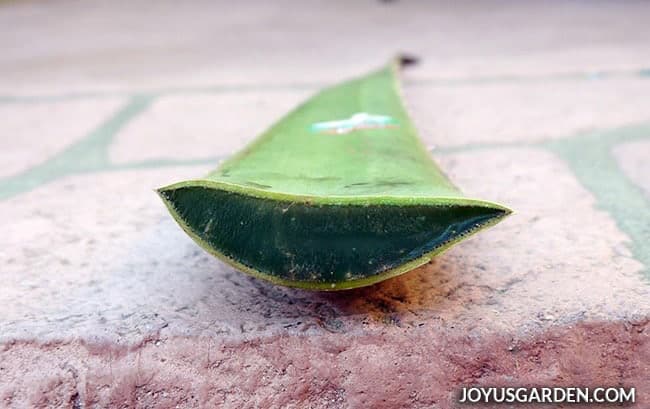
What to know about an Aloe vera plant
Here’s something you need to know: the leaves of the Aloe Vera plant will turn orange (or orange/brown) if they get sunburned or environmentally stressed.
Mine in Santa Barbara turned pale and orangish because it was severely potbound, getting a bit too much sun and couldn’t properly uptake water and nutrients.
Here in Tucson, my Aloe vera is currently brownish because of the extreme summer heat. In winter they turn the same color when the temps dip low. I’ve found that when the conditions are to their liking, they do green back up.
Aloe vera doesn’t mind being a bit pot bound so you don’t need to repot it every year. I hadn’t repotted mine in Santa Barbara for at least 3 years and it was more than “a bit potbound”. The plant was much happier and eventually greened back up after being repotted.
As this plant grows and the leaves get big and full of gel, it gets quite heavy. You’ll need a substantial base – no little flimsy plastic pots here, please.
Aloe does best in pots which have at least 1 drain hole. You don’t want any water to sit in the bottom of the pot.
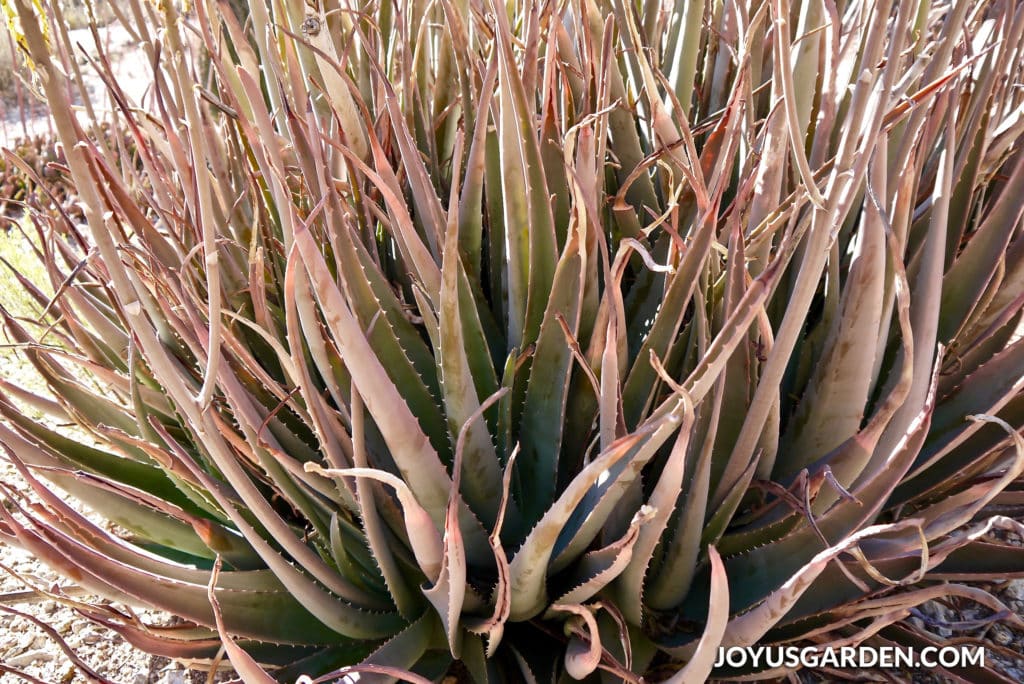
Quick recap: if you’re growing this succulent indoors, just remember – high light, low water. Those roots are subject to rot and need oxygen just like the leaves and stems do. Outdoors, the light and watering depend on what climate you’re growing it in.
There are so many different species and varieties of aloes in the world and this one is definitely the most well known. How does it feel to be so fabulously famous Aloe vera? Be sure to get one, you’ll not only love and use it too!
Note: This post had been previously published & was updated on 7/14/2020.
Happy gardening,

Learn more about houseplants and succulents!
- Growing Aloe Vera Indoors: 5 Reasons You May Be Having Problems
- Aloe Vera 101: A Round-Up of Our Care Guides
- How To Transplant Succulents in Pots
- Easy Care Office Plants for Your Desk
- Hanging Succulents to Love
- Recipe For DIY Cactus & Soil Mix For Pots
This post may contain affiliate links, you can read our policies here.
- About the Author
- Latest Posts
Nell, the founder of Joy Us garden, was born into a gardening family and grew up in Connecticut’s countryside. After living in Boston, New York, San Francisco, & Santa Barbara, she now calls the Arizona desert home. She studied horticulture & garden design, working in the field all her life. Nell is a gardener, designer, blogger, Youtube creator, & author. She’s been gardening for a very long time & wants to share what she’s learned with you.

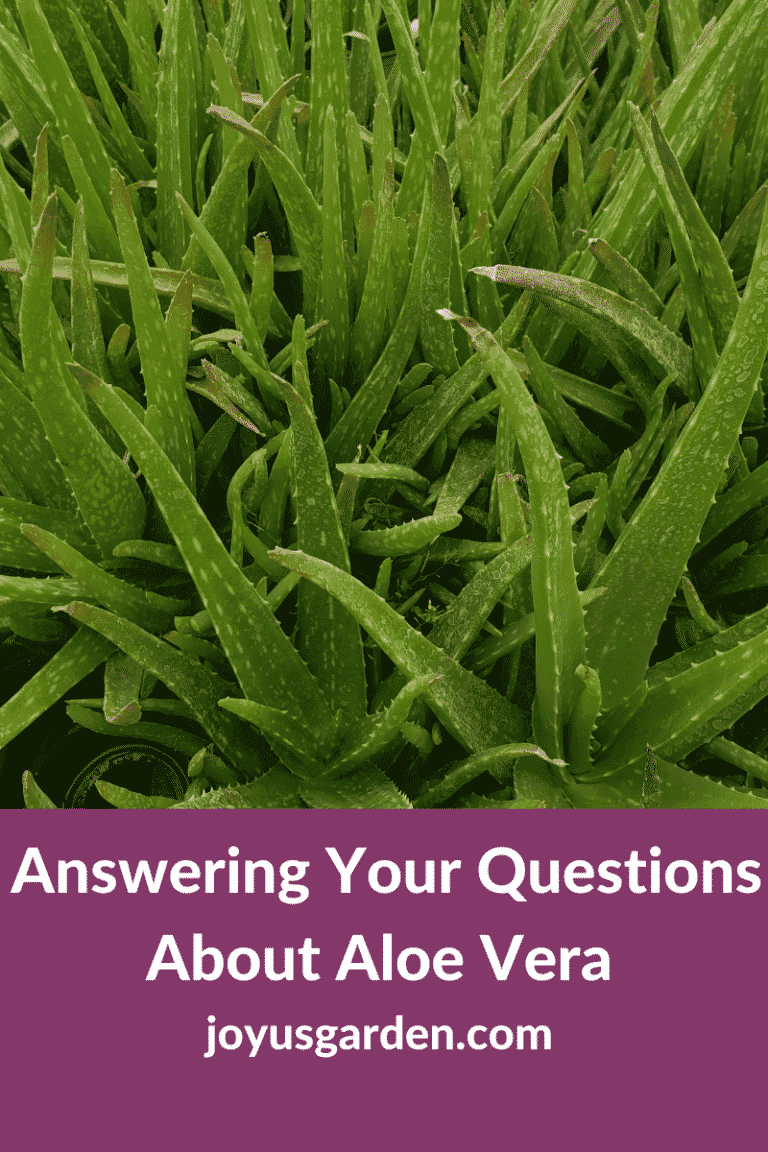
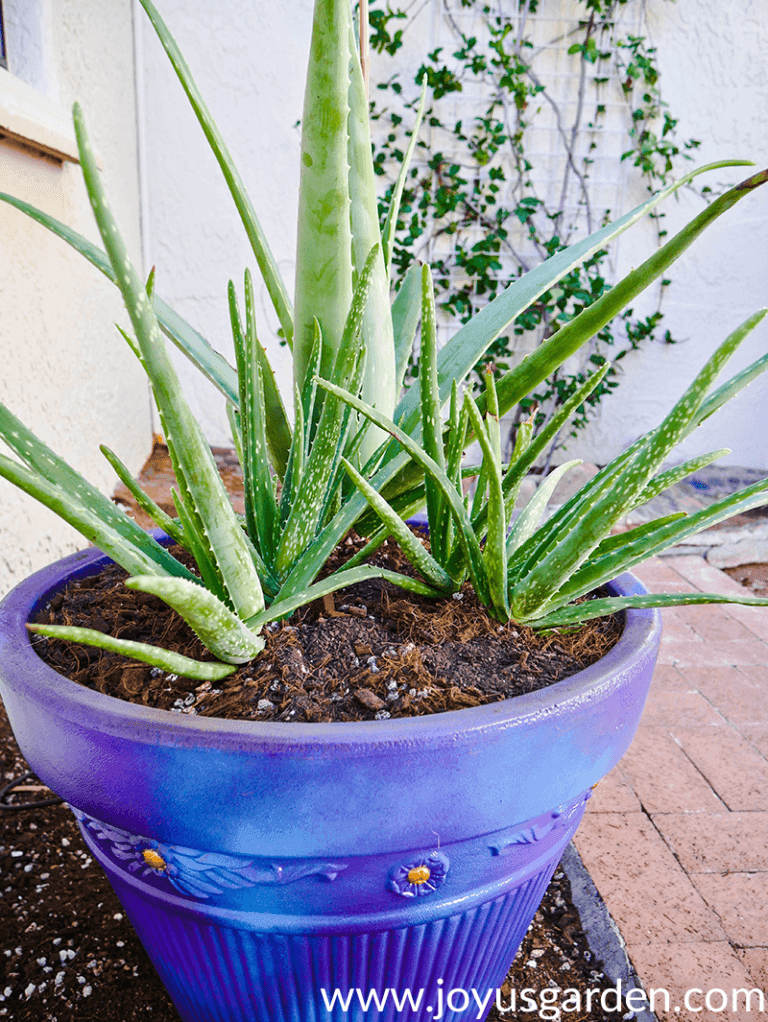
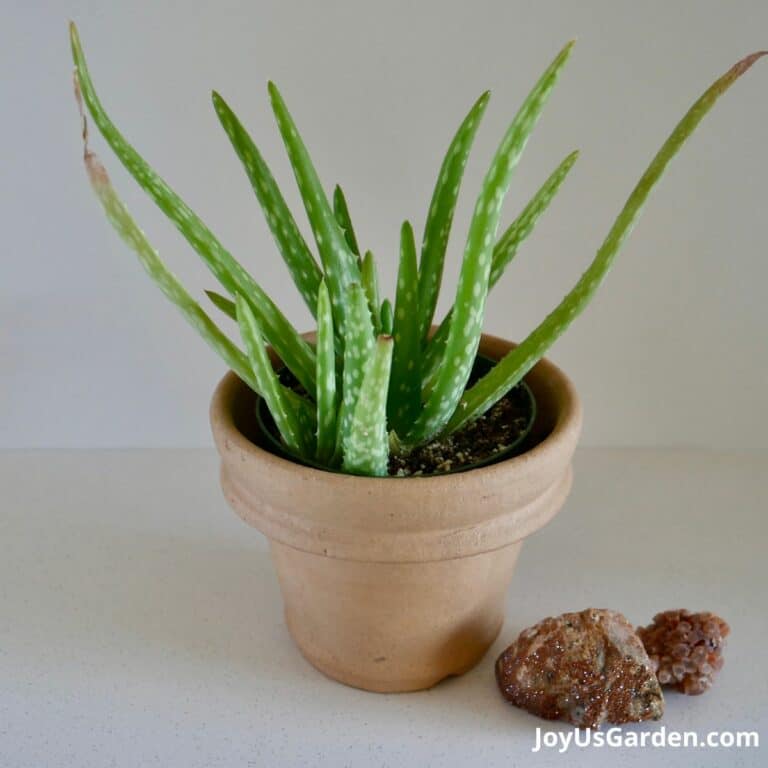
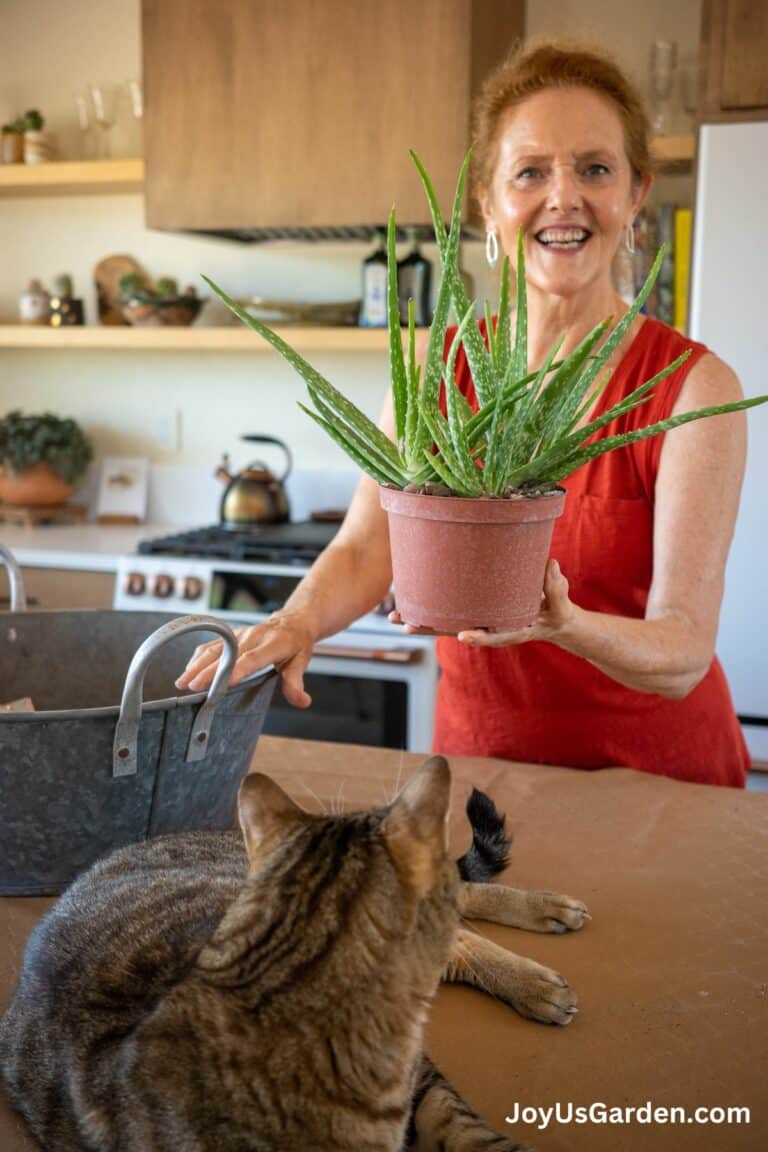


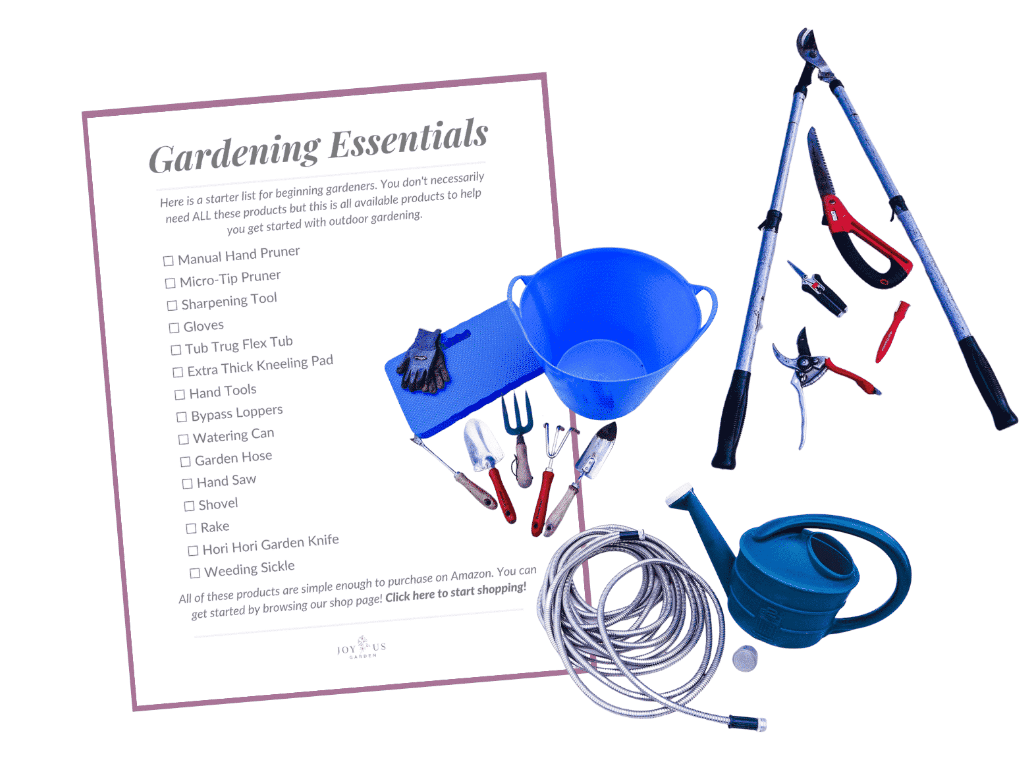
Hi Sandy – I did that in this post & video here: https://www.joyusgarden.com/aloe-vera-propagation-how-to-remove-pups/ Aloe vera is a tough plant root wise but some of the leaves may break or bend during the transplant. Nell
Brilliant advice – thank you ?
Jo – You’re welcome. Nell